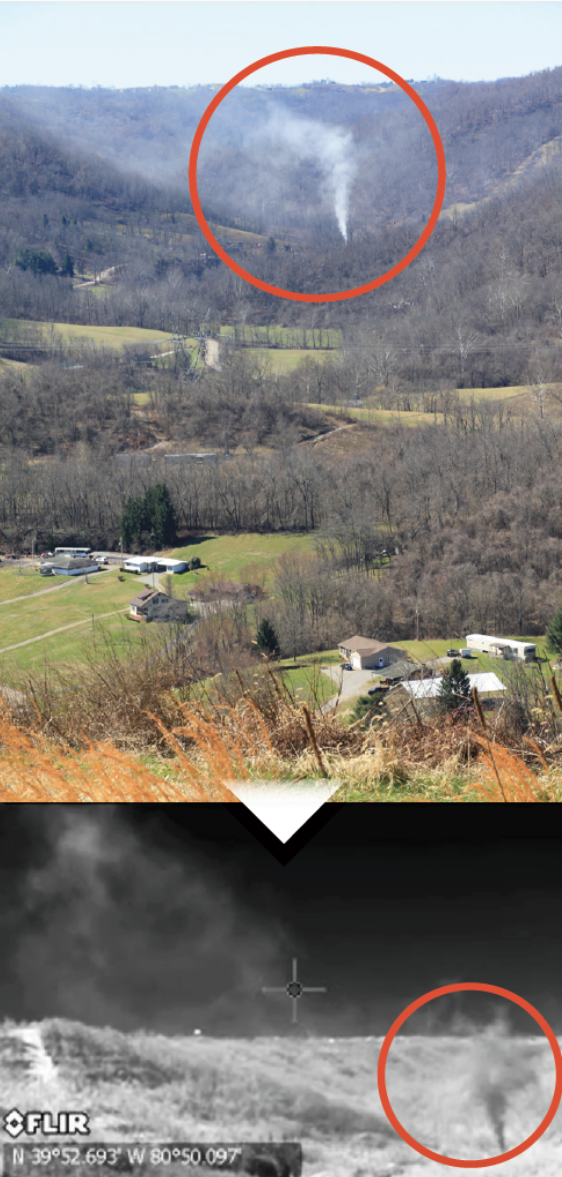As the public health emergency posed by the coronavirus spread across the country, Ohio quietly marked the anniversary of a different kind of crisis that also underscored the need for swift action.
March 7, 2018 was the day that operators finally managed to cap an out-of-control gas well in the small town of Powhatan Point. The pollution released during this three-week blowout set the US record for the single largest known methane release, making it an unprecedented climate disaster.
Earthworks and the Ohio Environmental Council recognized the anniversary with a live press conference that called for urgently-needed federal and state controls on the methane pollution that Ohio’s oil and gas industry continues to release every day.
You can read remarks from Earthworks’ Leann Leiter who recounts her first-hand experience of the 2018 well blowout disaster, or listen to the entire press event here:
Just over two years ago, I stood on a hill in Powhatan Point watching a disaster unfold as an out-of-control gas well erupted in an unrelenting, massive geyser of liquids and gases. The gas well — owned by XTO, a subsidiary of ExxonMobil — exploded on February 15, 2018 and continued leaking pollution into the air for nearly three weeks. Residents up to a mile and a half away could see the initial explosion, which caused the evacuation of 36 homes and about 100 people. Guided by a local resident and using Earthworks’ specialized optical gas imaging camera — a tool that lets us see normally invisible air pollution — we documented that the emissions from the broken wellhead extended hundreds of feet higher than what the naked eye could see, and traveled miles beyond the site and along adjacent ridges.
Having also documented the infamous Aliso Canyon methane disaster two years prior in California, we suspected the severity of what was happening before us. Methane — the primary component of natural gas — is an incredibly powerful greenhouse gas, 86 times more damaging to the climate than carbon dioxide. Only later did we learn that we had witnessed a climate disaster twice as extreme as the historic Aliso Canyon gas storage leak in California, making Powhatan the single largest recorded methane pollution release in US history.
More than a year after XTO capped their well, satellite researchers in the Netherlands calculated the magnitude of this single climate disaster. But the truth is, Ohio’s gas industry was contributing to the climate crisis before and continues to contribute to that disaster every single day. The state has hundreds of thousands of oil and gas facilities and continues to permit new ones. Even more alarming, the petrochemical industry has targeted the Ohio River Valley for a proposed industrial corridor of factories like “ethane crackers,” the first of which is already under construction north of Pittsburgh. This type of development, and the constant drilling required to feed the new facilities, will worsen air quality, risk the health of Ohioans, and make climate change worse. The next facility on tap would be in Belmont, Ohio — mere miles from the Powhatan Point explosion — and has already acquired numerous permits and begun site preparations.
Ohio has no state-level rules in place to control oil and gas methane pollution, and laudable initial efforts by the Ohio EPA that began in 2018 appear to be at a stand-still. This gap in regulations make federal rules especially critical in the fight to reduce methane pollution from any new oil & gas sources the state continues to approve.
State and federal regulations are essential to reducing the harm already being done, but are not the solution to the climate crisis nor an assurance against terrifying disasters like large-scale blowouts. Ohio, like its oil and gas producing neighbors, must take decisive action to transition away from fossil fuel extraction and toward an energy economy that provides good, long-term jobs, while protecting human health and a liveable climate.
For More Information:


